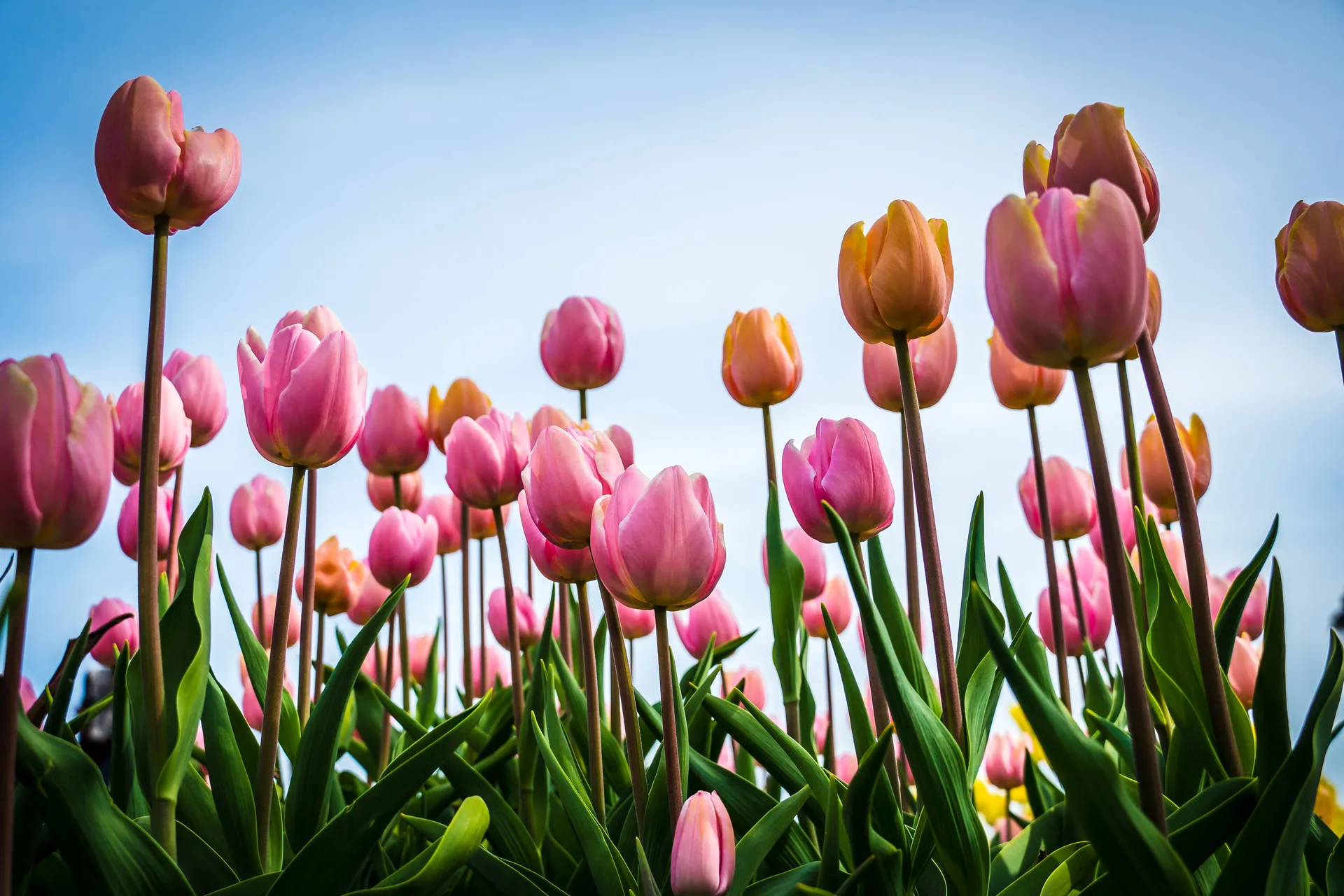Tulip: A Flower that Symbolizes Love, Royalty, and Spring
Introduction
Flowers are one of the most beautiful creations of nature, and tulips are among the most popular ones. Tulips are known for their vibrant colors, unique shapes, and long stems. They are native to Central Asia and Turkey, and were introduced to Europe in the 16th century. Tulips have been used in various cultures for different purposes. In the Ottoman Empire, tulips were a symbol of wealth and power, and were used in palaces and gardens. In the Netherlands, tulips were highly valued during the Dutch Golden Age and became a symbol of love and affection. In this article, we will explore the history, symbolism, and cultural significance of tulips.
History of Tulips
Tulips were first cultivated in the Ottoman Empire in the 10th century. They were highly valued for their beauty and were used in gardens and palaces. The Ottomans also used tulips in their art and textiles, and the flower became an important symbol of the empire. Tulips were introduced to Europe in the 16th century by a Flemish botanist named Carolus Clusius. Clusius planted tulips in the University of Leiden's botanical garden, and they soon became popular among the wealthy and aristocratic classes. During the Dutch Golden Age in the 17th century, tulips became highly prized and were used as a form of currency. Tulip bulbs were traded at extremely high prices, and the market eventually crashed in 1637, leading to what is known as the "tulip mania." Today, tulips are widely cultivated in many countries, including the Netherlands, Turkey, and the United States.
Symbolism of Tulips
Tulips are known for their vibrant colors, and each color has a different symbolism. - Red tulips symbolize love and passion. They are often given as a romantic gift. - Yellow tulips symbolize happiness and sunshine. They are a great gift to brighten someone's day. - Pink tulips symbolize affection and caring. They are often given as a gift to show appreciation for someone. - White tulips symbolize purity and innocence. They are often used in weddings and other ceremonies. - Purple tulips symbolize royalty and admiration. They are often given as a gift to show respect and admiration. Tulips are also associated with spring and renewal. They are one of the first flowers to bloom after winter, and their bright colors are a welcome sight after the gray days of winter.
Cultural Significance of Tulips
Tulips have played an important role in many cultures throughout history. In the Ottoman Empire, tulips were a symbol of wealth and power, and were used in palaces and gardens. The Ottomans also used tulips in their art and textiles, and the flower became an important symbol of the empire. In the Netherlands, tulips have a long history and are still an important part of the country's culture. The Dutch are known for their tulip fields, which attract millions of visitors every year. Tulips are also a popular souvenir for tourists, and are often seen in Dutch art and design. Tulips have also been used in literature and art throughout history. In the poem "Tulips" by Sylvia Plath, the flower is used as a metaphor for hope and renewal. In the painting "Vase of Flowers" by Jan van Huysum, tulips are used as the centerpiece of a beautiful floral arrangement.
How to Grow Tulips
Tulips are easy to grow and can be planted in the fall for spring blooms. Here are some tips for growing tulips: 1. Choose a sunny spot with well-draining soil. 2. Plant the bulbs about 6 inches deep and 4-6 inches apart. 3. Water the bulbs after planting, and then wait until the spring to water again. 4. Fertilize the bulbs in the fall before planting, and again in the spring when they start to grow. 5. After the blooms have faded, cut off the stem but leave the leaves to die back naturally.
Conclusion
Tulips are a beautiful and popular flower that have a long history and rich symbolism. They are associated with love, royalty, and spring, and are an important part of many cultures around the world. Whether you are planting them in your garden or giving them as a gift, tulips are sure to brighten up any day.
Frequently asked questions about Tulip wallpapers
Q: What is the category of pictures available on your website?
A: We provide pictures of various flowers, including tulips.
Q: Are the pictures available for download free of cost?
A: Yes, all the pictures available on our website can be downloaded for free.
Q: What file types are available for download?
A: Users can download pictures in .jpg, .png and .webp file types.
Q: How many tulip pictures are available on your website?
A: Currently, we have 62 tulip pictures available for download.
Q: Can users choose different sizes for the pictures?
A: Yes, users can choose different sizes (width and height) for the pictures they wish to download.
Q: Is the website mobile-friendly?
A: Yes, our website is mobile-friendly and automatically detects the visitor's mobile screen size to provide the right size for the pictures.
Q: Do I need to create an account to download pictures?
A: No, users do not need to create an account to download pictures from our website.
Q: Can I use the pictures for commercial purposes?
A: Our pictures are available for free download for personal use only. For commercial purposes, users need to contact us for permission.
Q: How can I credit the pictures if I use them on my website or social media?
A: Users can credit the pictures by mentioning our website's name and the photographer's name (if available).
Q: How often do you update your collection of tulip pictures?
A: We update our collection of tulip pictures regularly, but the frequency may vary.































































